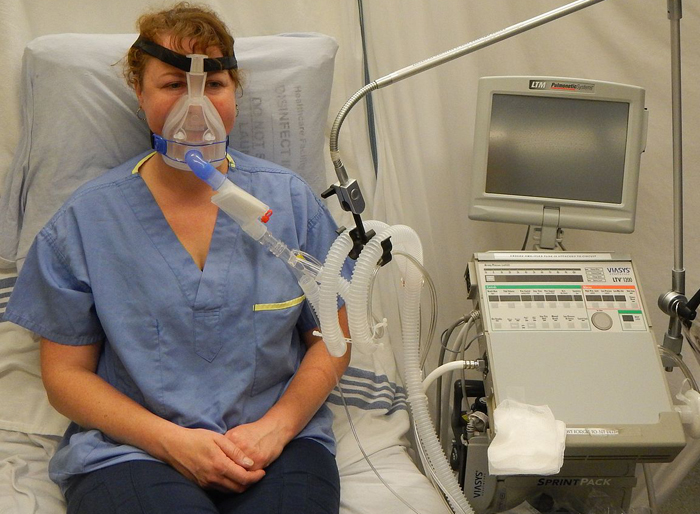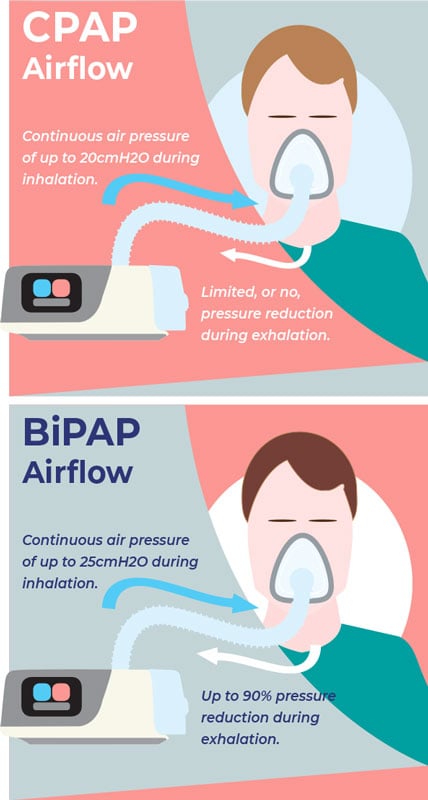Personalized Plans Readily Available for BiPAP Rental Solutions
Personalized Plans Readily Available for BiPAP Rental Solutions
Blog Article
Bipap vs. CPAP: Which Is the most effective for Your Sleep Problem?
When browsing the complexities of sleep problems, the option between BiPAP and CPAP therapy is a vital consideration. Each method supplies distinct benefits tailored to certain problems, yet the choice rests on private patient requirements and comfort degrees. While CPAP offers a steady airflow suitable for obstructive sleep apnea, BiPAP's dual stress settings might enhance convenience for those with even more elaborate respiratory problems. Understanding these distinctions can significantly impact treatment efficiency, leaving one to contemplate which choice absolutely aligns with their health and wellness needs and way of life.
Comprehending Rest Disorders
Sleep disorders incorporate an array of problems that disrupt typical sleep patterns, impacting both the top quality and duration of rest. These conditions can manifest in different types, consisting of sleeplessness, rest apnea, narcolepsy, agitated leg syndrome, and parasomnias. Each condition presents one-of-a-kind challenges, typically bring about substantial daytime exhaustion, cognitive impairment, and psychological disturbances.
Insomnia is defined by difficulty dropping or remaining asleep, while rest apnea involves duplicated disruptions in breathing throughout rest, commonly bring about fragmented rest. Narcolepsy, on the various other hand, is noted by extreme daytime sleepiness and sudden sleep assaults. Troubled leg disorder creates unpleasant sensations in the legs, prompting an irrepressible desire to relocate them, which can additionally prevent the ability to drop off to sleep.
The effect of rest conditions expands beyond private health, influencing total efficiency, connections, and quality of life. Understanding the particular nature of each problem is crucial for efficient medical diagnosis and therapy. As sleep health and wellness ends up being progressively identified as a vital part of overall wellness, resolving these disorders is necessary for boosting both rest top quality and daily performance.
Exactly How CPAP Works
Constant Favorable Respiratory Tract Pressure (CPAP) therapy is regularly used as a main therapy for obstructive sleep apnea (OSA) The device of CPAP involves using a device that supplies a constant stream of air via a mask used throughout rest. This air movement keeps favorable stress in the respiratory tract, protecting against the collapse or obstruction of the throat that can take place during sleep.
When an individual takes in, the CPAP machine offers a continuous flow of air, ensuring that the air passage continues to be open - BiPAP Rental. This not only eases the symptoms of OSA, such as snoring and interrupted sleep patterns, however also lowers the involved health and wellness dangers, consisting of cardiovascular problems and daytime fatigue
The pressure settings on a CPAP equipment can be customized to meet individual person needs, often figured out through a rest research study. On the whole, CPAP treatment has been revealed to significantly enhance the high quality of sleep and overall health for individuals suffering from obstructive rest apnea.
How BiPAP Works
BiPAP, or Bilevel Favorable Respiratory Tract Pressure, is a specialized type of non-invasive ventilation that is particularly advantageous for people with problems such as complicated sleep check here apnea or respiratory system disorders. Unlike CPAP, which provides a continuous stream of air at a single stress, BiPAP offers two distinct stress settings: a greater inspiratory pressure for inhalation and a reduced expiratory pressure for exhalation. This dual-pressure approach enables less complicated breathing, decreasing the effort required throughout exhalation.
The device runs via a mask fitted over the nose or mouth, attached to a device that generates air pressure. When the individual breathes in, the device supplies the higher stress to aid with air movement, guaranteeing that the airway remains open. Upon exhalation, the maker automatically lowers the pressure, making it more comfortable for the person to breathe out.

Secret Distinctions Between BiPAP and CPAP

In comparison, BiPAP (Bilevel Positive Airway Pressure) provides two different stress setups: one for inhalation and a lower one for exhalation. This twin pressure system allows for even more comfortable breathing, particularly for people that deal with breathing out versus a constant stress. BiPAP is frequently advised for clients with intricate sleep apnea, chronic obstructive pulmonary illness (COPD), or those that call for extra assistance during rest.
Additionally, the complexity of BiPAP gadgets usually leads to a higher cost and calls for more careful titration than CPAP. BiPAP Rental. Comprehending these key distinctions can help in identifying which gadget may be extra appropriate for details rest disorders, establishing the groundwork for enlightened treatment choices
Picking the Right Therapy
The choice in between BiPAP and CPAP therapy mainly pivots on the details characteristics of the sleep problem, the individual's general wellness, and their convenience with the tool. CPAP, which supplies a continual stream of air, is typically recommended for obstructive sleep apnea (OSA)
Conversely, BiPAP see this site gives two degrees of stress: one for inhalation and a lower one for exhalation. This dual pressure system is useful for people with intricate rest apnea or those that experience trouble breathing out against a constant stress. In addition, BiPAP is usually advised for people with breathing conditions, such as chronic obstructive lung disease (COPD), where varying stress settings can enhance convenience and conformity.
Ultimately, a comprehensive examination by a sleep specialist, including a rest study, can assist determine which treatment aligns ideal with the client's demands. Aspects such as comfort, convenience of usage, and details medical conditions should also be taken into consideration to optimize therapy outcomes.
Conclusion
In summary, both BiPAP that site and CPAP serve unique objectives in the monitoring of sleep disorders. CPAP is efficient for obstructive sleep apnea with regular air movement, while BiPAP offers double pressure settings that enhance comfort for those with intricate rest apnea or respiratory problems. The choice in between these therapies ought to be guided by individual demands and conditions, necessitating an extensive examination by a sleep expert to make sure optimal treatment end results and boosted top quality of rest.

On the whole, CPAP therapy has been revealed to considerably enhance the top quality of sleep and general wellness for individuals suffering from obstructive sleep apnea.
BiPAP is usually recommended for people with complex sleep apnea, chronic obstructive lung condition (COPD), or those that require extra support during rest.
CPAP is reliable for obstructive rest apnea through consistent airflow, while BiPAP provides twin pressure setups that boost convenience for those with complex sleep apnea or breathing issues.
Report this page